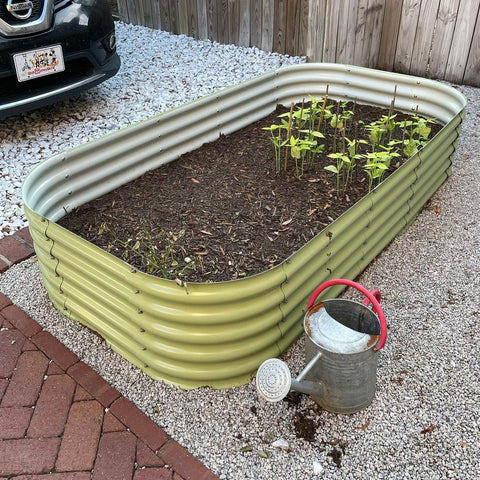Tips from Olle Garden Bed: For High Altitude Gardening
The following content also has some reference value for raised garden beds.

- Practice patience
Our growing season starts later and ends earlier than our neighbors living at the foot of the mountain. Usually, we do our routine shopping at lower altitudes, and when our garden is still dormant, we see bulbs and apricot trees in full bloom. It's tempting to start gardening, but if you choose plants for your area and plant them at a time that suits your climate, you will be more successful. Select high altitude plants, such as Delosperma. It will also help ensure success.
- Know your region
One way to identify your area is to look at the extreme winter low temperatures and see where your climate fits in the hardy zone. Please consult your local cooperative promotion service agent; They will also tell you the average frost date in spring and autumn. This will give you a general idea of how long your growing season is. If the temperature regularly drops to 40 ℃ at night in summer, it is not recommended that you try to plant tomatoes, but you can plant many other plants. In fact, some plants grow better at high altitudes because they like cool weather.
- Use microclimate
Microclimate refers to a place that is warmer, cooler, wetter or drier than most landscapes. They can be natural or made by yourself, and they can be as simple as rocks that bask in the sun all day long.
I use a lot of stones to create a microclimate. Stone absorbs heat, regulates soil temperature, and keeps soil under stone moist. They will produce small shadow pockets, especially for roots. The stone patio in the southeast corner of my home is my warmest microclimate. The plants there began to grow nearly a month earlier than my perennial bed.

- Use covers
Covering is something I often use. Gravel mulch heats the soil early in the season, so its effect as a seasonal extender is admirable. This technique was used by prehistoric Native Americans to grow cotton in the climate of five regions in northern New Mexico. I also use gravel mulch around my cacti and succulents, as well as perennial plants that don't like organic mulch. On most of my perennial beds, I use a layer of compost as a cover and relax the needles on it. They are not easy to blow off and make attractive toppings that decompose slowly.
- Select deer resistant plants
If you live at high altitude, you live with deer. If they are really hungry, they will eat anything. However, if their favorite food supply is sufficient, they will ignore some plants. There are many deer resistant plants, so I try to choose from them. If there is a plant, you must be attractive to deer, please use insect repellent, such as deer barrier, or some kind of barrier.

High altitude gardening has its own challenges, but with a little effort, you can get a truly spectacular garden, which is also different from the garden of friends at low altitude.
